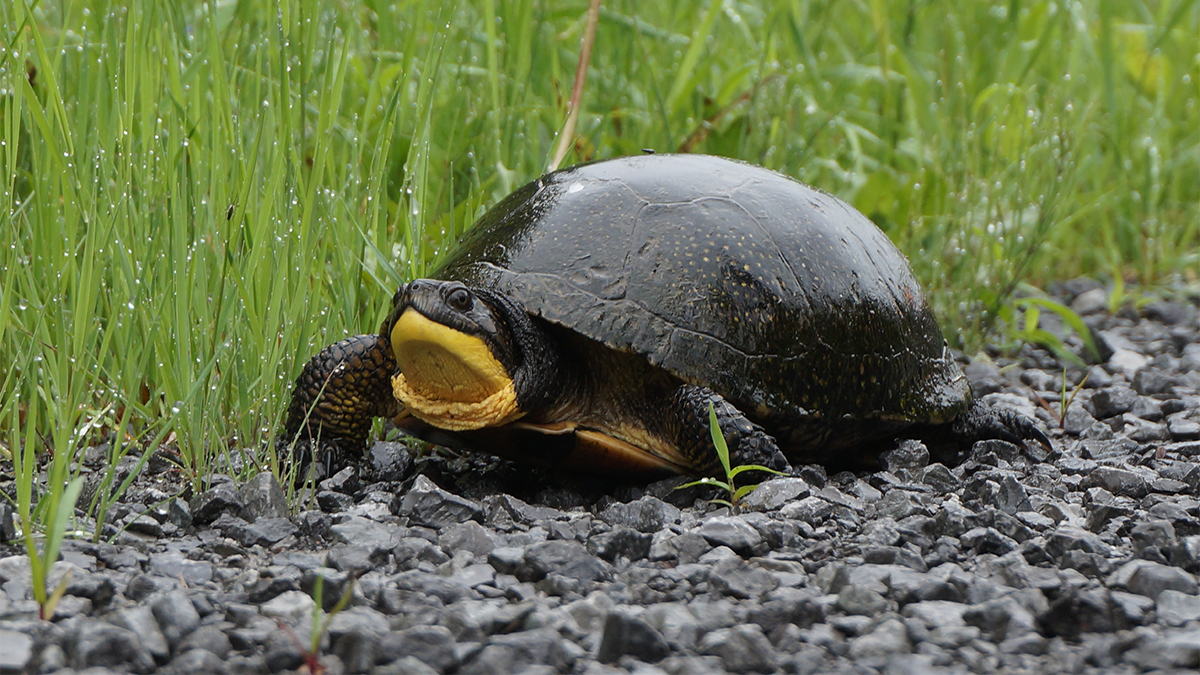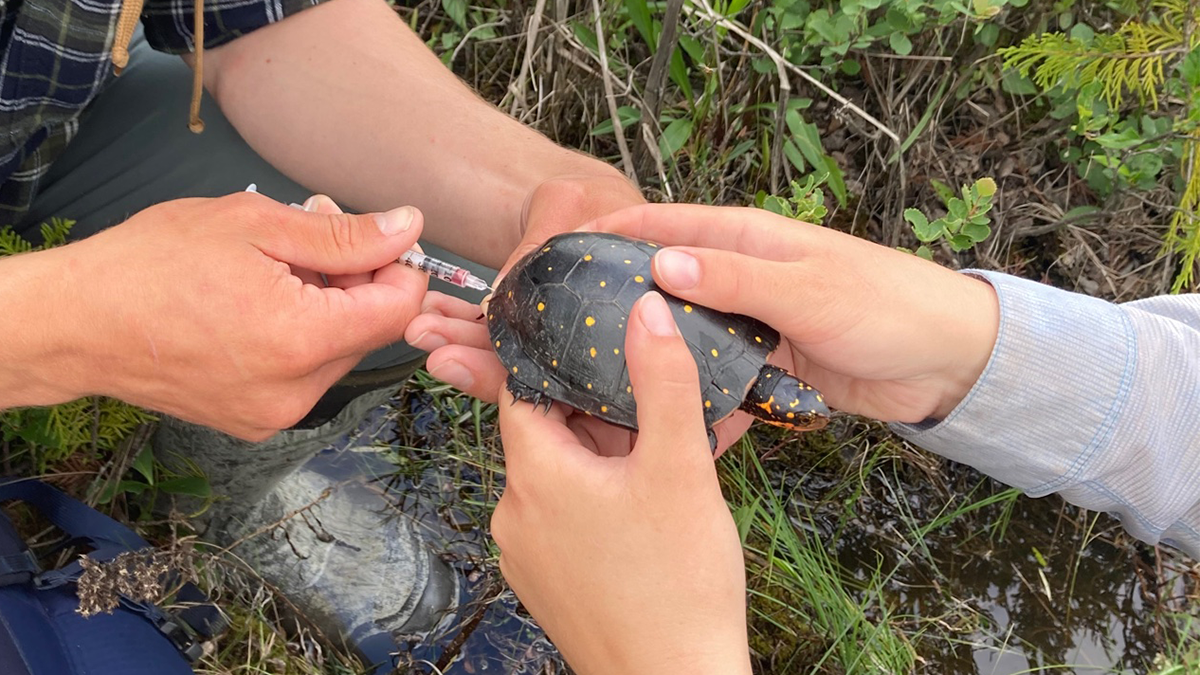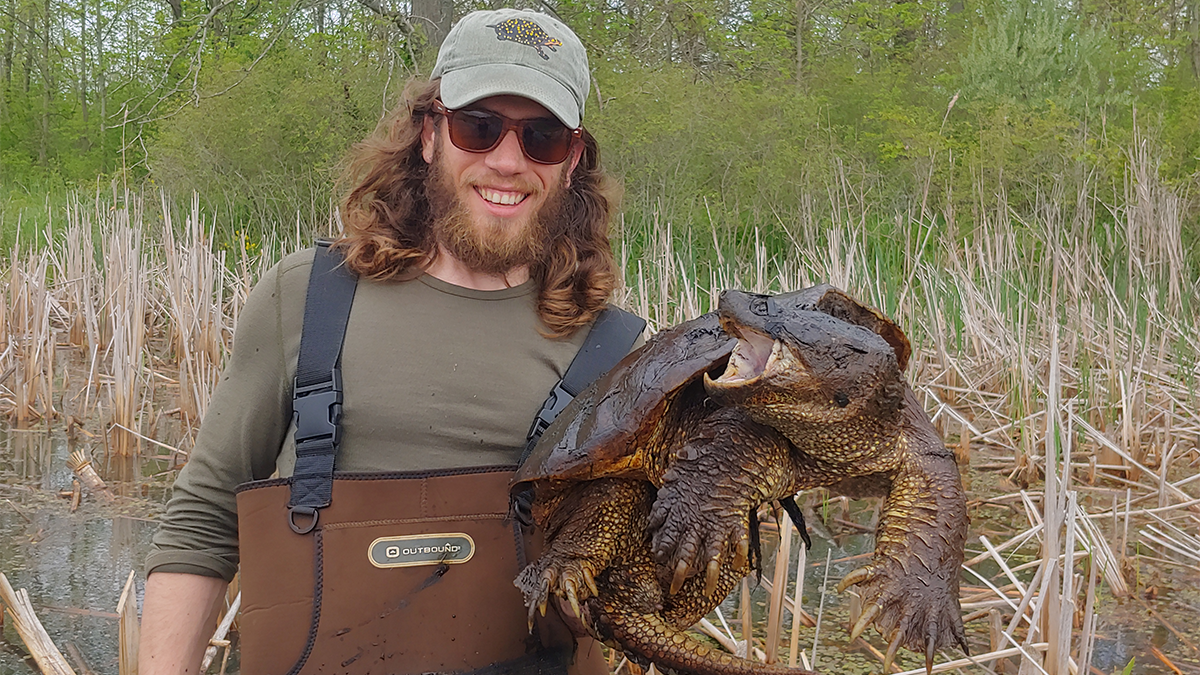With the passage of Ontario’s Bill 23 to fast-track new housing even on environmentally sensitive lands, experts say Ottawa’s at-risk turtle species now face a heightened, quadruple threat to survival.
Turtles have been around since the days of the dinosaurs more than 200 million years ago. But motor vehicles, predators, poachers and risks to wetlands — now exacerbated by the More Homes Built Faster Act — are testing the longevity of these key ecosystem players.
According to David Seburn, a Canadian Wildlife Federation (CWF) turtle specialist, Ottawa hosts six of Canada’s eight freshwater turtle species. All have been listed as at-risk species since April 2018.
“This makes turtles one of the most endangered groups of wildlife in the country,” Seburn said. “That’s something that most wildlife biologists don’t know, and it’s certainly something most people in the public don’t know.”
A quadruple threat
The City of Ottawa plays an important role in local turtle conservation but doesn’t monitor populations, according to natural systems and rural affairs manager Nick Stow. But Seburn said the CWF has found more than 1,000 dead turtles on Ottawa roads in recent years.
“That’s a staggering amount of roadkill, and it’s almost certainly not sustainable,” he said, noting Ottawa’s “huge” road network. “A lot of that roadkill is targeting adult females in June as they’re coming out of the wetland, looking for places to nest.”

Predation is another concern, with raccoons actively seeking turtle nests in breeding season.
“It’s fine if they get some nests, but in some areas they’re getting 80 or 90 per cent,” Seburn said.
He didn’t disclose areas in Ottawa with sizable turtle populations because of instances of poaching and nest-stealing. Turtles in Canada are poached most commonly for the pet trade, according to reptile expert Tyler Ambeau, who hs helped incubate Blanding’s turtle eggs for the Ontario Turtle Conservation Centre (OTCC).
“Their strategy is to live a long time and produce a lot of eggs because only about one per cent of the young that hatch will make it through adulthood,” Ambeau explained. “For snapping turtles, for example, it can take up to 60 years for them to replace themselves in the population with another breeding adult.”
Species such as the spotted turtle have stayed more stable in Eastern Ontario than in the southwest, he said, but that could change as cities such as Ottawa yield unspoiled land for development. Critics say Bill 23, which the Ontario government passed on Nov. 28, will make it easier to build on wetlands. Soil disturbed by construction, while a shorter-term issue, can attract nest-seeking turtles and make them vulnerable to bulldozing.
"Their strategy is to live a long time and produce a lot of eggs because only about one per cent of the young that hatch will make it through adulthood."
Tyler Ambeau, Ottawa reptile expert
Seburn said turtles clean up freshwater habitat, adding they store a lot of biomass, carbon and calcium. He called snapping turtles the "janitors of wetlands" for scavenging dead fish.
“Turtles play an important role in maintaining healthy rivers, streams, and wetlands as part of a functional food web," Stow said in a statement. "As long-lived organisms, they are wonderful indicators and symbols of healthy aquatic ecosystems.”
Activists want Bill 23 repealed
The City of Ottawa supports the protection of local wetlands and freshwater ecosystems and the role that conservation authorities play in this, Stow said.
Paul Johanis, president of Greenspace Alliance of Canada's Capital, said he's hopeful Bill 23 will be repealed because many municipalities and organizations oppose it on environmental grounds and "we've seen reversals before from this government."
"As soon as that wetland is no longer considered a provincially significant one, then it's not protected," he stressed. "A private owner could, either themselves or selling it off to developers, make it available."
Johanis said nothing would stop officials from bringing wetlands into the urban boundary to have them drained and filled, whether for housing or for industrial or commercial projects.
"It's not just residential development in the urban area that threatens wetlands," he said.

Ambeau called on the public to speak out against Bill 23, saying the situation for Ottawa's turtles has become dire but adding "it's not all doom and gloom.
"If we step up and we protect the wetlands and prevent the road mortality, then we can help them rebound."
Protection and incubation efforts
Ambeau said the OTCC has seen a fairly consistent increase each year in the number of turtles injured on roads, adding that motorists sometimes hit them intentionally. He encouraged people to help turtles cross roads when safe to do so.
Bringing injured turtles to the OTCC in Peterborough, Ont., where wounded mothers' eggs are extracted and incubated, is another option. Ambeau said the OTCC's volunteer "turtle taxi" helps relay injured turtles from other cities.
Additionally, Stow said the public can protect turtles by keeping a "respectful distance" from the reptiles while they bask or nest, as well as by volunteering with the City Stream Watch Program or Ottawa Riverkeeper to monitor freshwater habitats, remove invasive species and clean up garbage.
Seburn noted people can report nests to Ontario's Natural Heritage Information Centre and build protectors around nests near their homes.
"The protector keeps the raccoons and other predators from digging up the nest and getting at the eggs but at the same time has exit holes [for the hatchlings]," he explained.

The CWF's incubation program has released more than 3,000 hatchlings locally in recent years, Seburn added.
"That's an enormous number of turtles pushed into these ecosystems across the Ottawa area," he said. "At the same time, something like a [female] snapping or Blanding's turtle takes about 20 years to be old enough to breed and lay eggs."
Seburn said increasing local turtle numbers ultimately won't bring results for several decades.
"I'm fairly optimistic that we can maintain turtle populations in a lot of protected areas and areas without strong development pressures on them, but it's an ongoing issue."




